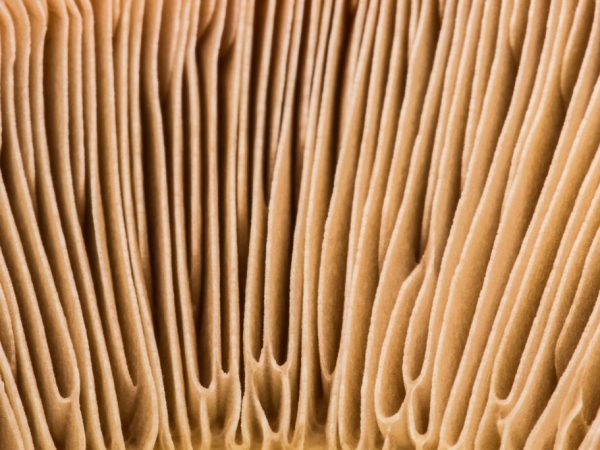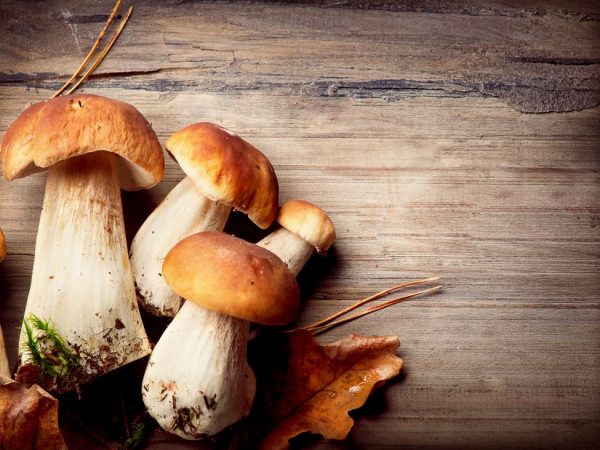Features of fungal spores
Mushrooms are a unique kingdom of creatures that combine the characteristics of plants and animals. They multiply by means of microscopic cells called spores. One mushroom can contain up to 40 billion of these microscopic particles. At the same time, fungal spores do not always look the same.

Features of fungal spores
Mushroom propagation
The fungus is ready to reproduce after its spores have matured. Microscopic unicellular formations are released into the air or water. They are capable of being transported tens of kilometers from the place where the fungus grows. They also get on the fur of animals or feathers of birds and travel with them until they settle on some territory. Not all of them survive in the future. That is why these organisms have a huge number of particles that perform the function of reproduction.
After the spores of fungi enter the environment suitable for their life, they begin to "take root", or rather, germinate. Hyphae appear that look like thin threads when viewed with a microscope. The mycelium (mycelium) is formed from the hyphae, which is located below the surface of the earth. The mycelium forms the fruiting body, which is usually located above the surface of the soil and which humans are accustomed to using in cooking. The mycelium itself, located in the soil, is called a vegetative body.
Fungi spores will form directly in the fruiting body. After cutting off one fruiting body, the mycelium gives another, etc. The process continues until the mycelium receives all the nutrients and water necessary for the existence and development. In adverse conditions, she dies.
Dispute formation process
The formation of spores in all fungi occurs in the same way. The name of these microscopic particles means "seeds". Scientists suggest that this way of reproduction of organisms appeared more than 400 million years ago. This method of reproduction helped living organisms to conserve energy for life in adverse conditions. Today, organisms that have the ability to reproduce by spores are considered the most viable.
Mold is considered the most viable today. Some of its types are dangerous to human health, have a negative effect on the lungs and skin, and some are used for the manufacture of medicines and culinary dishes. In people with allergies, molds after the maturation of the spores cause runny nose, sneezing and itching.
Inside the fruiting body there are special cells called sporangia. Spores of the fungus are formed inside them. Cells intended for reproduction are capable of forming on the aerial mycelium. They are called conidia. Under the microscope, it seems that the aerial mycelium is represented by branches, at the ends of which microscopic reproductive cells are located. The cells formed in sporangia are called sporangiospores (endogenous spores), while the latter are called conidia.Some of the microscopic cells are mobile, some are not equipped with flagella that allow movement.
The structure of spores in fungi is quite simple. For many representatives of the mushroom kingdom, it differs slightly.
Spores of any fungus germinate only in a suitable environment. When exposed to an unfavorable environment, they die. The spores contain small amounts of nutrients, which prevents them from remaining viable for a long period of time. The only exceptions are conidia. They are able to remain viable for a long period of time. However, their formation takes much longer than the formation of sporangiospores.
Irina Selyutina (Biologist):
By structural features, mushrooms are divided into:
- lower: these include fungi with unicellular mycelium, and in the most primitive, the vegetative body is represented by a naked protoplast (mucor, etc.);
- higher: characterized by the presence of multicellular mycelium (ascomycetes, basidiomycetes).
Asexual reproduction of many lower fungi occurs with the help of mobile zoosporethat are formed in zoosporangia. In other fungi belonging to this group, spores devoid of locomotion organs are formed in sporangia and are called sporangiospores... Sporangia are located on special, different from other hyphae - sporangiates, which rise to the top of the substrate on which the fungus develops. This arrangement of sporangia relative to the surface is very convenient in terms of the spread of spores by air currents.
Asexual reproduction using conidia or conidiospores is characteristic of marsupials, basidial, imperfect and a small number of species of lower fungi that have adapted to a terrestrial lifestyle. Coated conidia can be airborne over long distances. There is information that the spores of the causative agent of wheat stem rust were found at a distance of 1000 km from the place of their mass development. In ascomycetes, conidia are formed on special outgrowths of the mycelium - conidiophores.
Mushroom spores are different. Their surface can be dry or slimy. Over the long period of existence of fungi on our planet, these microscopic cells have learned to adapt to environmental conditions.
The diameter of the reproductive fungal cell varies from 1 to 100 microns.
Growing mushrooms at home

Some types of mushrooms can be grown at home
Some representatives of the mushroom kingdom have healing properties. They can be grown at home. For this, it is worth using mycelium or microscopic cells - spores.
It is impossible to collect for sowing microscopic cells that are formed at the time of maturation of organisms, by separating them from the fungal body. We'll have to stock up on caps of mature mushrooms, in which cells are formed for reproduction. Legs are not used.
The sequence of obtaining a mixture and growing mycelium:
- Caps (about 200 g) are placed in clean water.
- To speed up the process of spore formation, add 5 tbsp to the water. l. sugar or alcohol. This rate is designed for 10 liters of water.
- Then the jar is left warm for 24 hours. It is advisable to choose a room in which the air humidity is increased. This allows the cells of the fungus to be activated, which simply means they will be able to germinate.
- After a day, you should well loosen the land on the site for planting. Breeding of representatives of the mushroom kingdom should take place near the trees.
- The top layer of the earth is removed without damaging the roots of the tree.
- Hats in water are crushed (rubbed with hands until a homogeneous gruel is obtained).
- After that, sowing is carried out. The activated cells, which are in a jar with crushed caps, are poured onto the roots, sprinkled with earth. Mushrooms sprout quickly.
- Watering is carried out 2-3 times every 5 days.
Even a small part of a solution made from mushroom caps and water contains a huge number of cells intended for reproduction.
Interesting Facts
Spore formation and mechanisms are of particular interest:
- Fungus spores can be called "smart" because their separation from the vegetative body occurs at the most appropriate time.
- The record holder for the formation of cells for reproduction is giant Langermannia. It forms 7 trillion spores.
- An interesting way is the spread of fungal spores. These organisms are capable of creating air movement that promotes cell proliferation. The temperature of the cap is reduced by evaporation of moisture, which allows a small air flow to form in the area of the cap. This flow is invisible to humans, but it raises light spore cells by 8-10 cm.
- The cells of the fungus, which are formed in the bursa (basidium), must retain the parental genes in order to reproduce. If this did not happen, the new fruiting bodies that sprout from them would be outwardly different. However, they retain all external similarities. The gene conservation process is not surprising. However, in spore fungi, the size of the cells intended for reproduction is small. Therefore, many are interested in how they store information about the genotype. This is due to the presence of a special molecule in which the data is stored. During the "unpacking" of this molecule, a special mechanism is triggered to obtain information. It also exists in pollen cells and sperm cells.
- Some spores that are in the bag (basidium) exit with an acceleration equal to 20 thousand units after they mature. At the same time, an overload of 3 units in a person leads to his death, but for disputes such overloads are quite safe. During the ejection, some microscopic cells reach speeds of 25 m / s.
- Fungal spores will be found in almost any room when air samples are taken. There are cells of several representatives of the mushroom kingdom in the air.
- Some activated spores, after maturation and release from the bag, are able to withstand high temperatures (80-90 ° C).
- Disputes are not only among representatives of the fungal kingdom, but also among bacteria. However, they serve a different function. The difference lies in the fact that spores for the fungus are a way of reproduction, and for the bacteria, the same cells serve as a defense that allows them to survive in an unfavorable environment.
- Fungal spores are able to penetrate into the human body, animals and plants. Inside another organism, they begin to develop. When small animals and insects enter the body, they often cause death. Developing in a person, they provoke the appearance of health problems. Parasitizing plants, they feed on their juices, which leads to death. Only in some cases is the union of mushrooms and plants mutually beneficial. Most often it is mycorrhiza.
Treatment of a person is often time-consuming due to the fact that it is extremely difficult to destroy all microscopic cells. The most dangerous for humans are pathogenic organisms.
Conclusion
The spread of fungi in nature occurs due to special microscopic cells - spores, which germinate, falling into a favorable environment. In one fungus, a huge number of such cells are formed, but only part of them survive. Their simple structure and microscopic size do not interfere with the development of adaptation mechanisms that allow fungi to survive and develop in any conditions.


